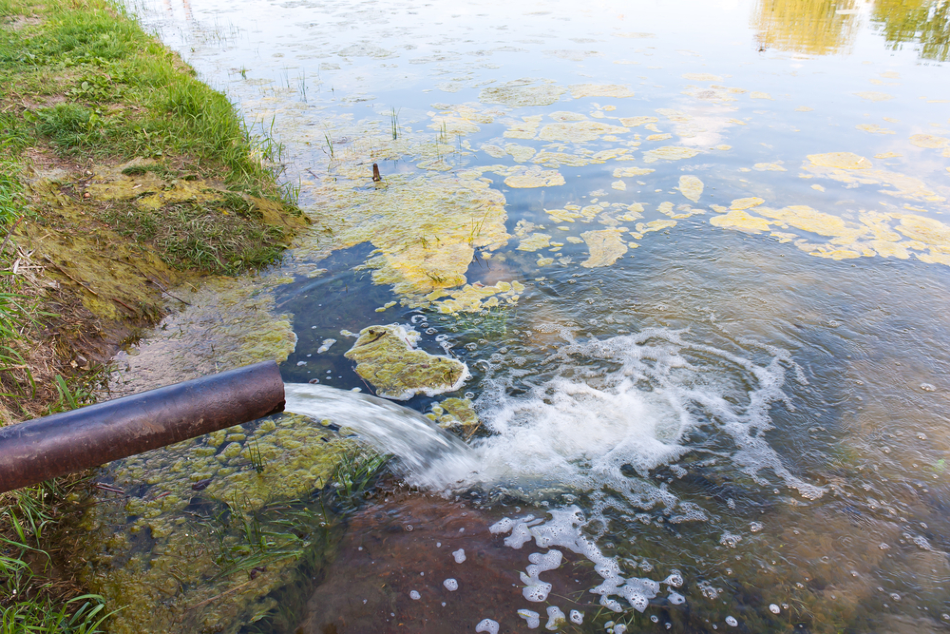Mar 12 2020
Whenever San Diego receives rains, waterways like the San Diego River and also its Alvarado Creek tributary will frequently experience bacterial pollution that eventually ends up in the ocean.

Image Credit: Alexmalexra/Shutterstock.com
This poses a public health threat to surfers, swimmers, and aquatic life, and it can arise from sewer line breaks that occur during storms, leaky septic tanks, or illegal release of wastewater into rivers.
When frequent contamination occurs in coastal cities, water samples would be generally collected and their quality would be tested to rule out bacterial contamination. If bacterial contamination is suspected, warnings would be issued to the public and access to beaches would be closed. However, this reactionary technique involves wait times that span from 18 to 24 hours, which present a possibly dangerous delay for the general public.
At San Diego State University, environmental engineers have adapted the prevalent fluorescence-detecting sensor technology and adapted it to allow rapid detection of microorganisms present in the water. The researchers are planning to integrate this existing technology with telemetry to send real-time contamination alerts. Such advancements have useful implications for government authorities and water monitoring agencies.
Fluorescence is present in every object, from the material in the clothes worn by people to the enamel on their teeth. Although fluorescence cannot be seen by the naked eye, it can be identified by unique sensors. Similar fluorescence is also found in bacteria and can be detected by these sensors. This helped the scientists to rapidly detect contamination.
We wanted to rapidly identify bacterial contamination, literally in seconds, and be able to watch the intensity increase in real time, using it much like a hand-held instrument. One problem many water managers are aware of is the need to have real-time data, and this could be the answer.
Natalie Mladenov, Water Quality Researcher and Associate Professor, San Diego State University
For a long time, Mladenov has been interested in assessing sensors as early warning alert systems for unexpected pollution events, in surface water and also at facilities where water is treated and reused.
Earlier, Mladenov had demonstrated how sensors based on fluorescence were able to denote the existence of pollutants in treatment facilities. But this time, she set out to explore whether such sensors can possibly be tweaked for incidents of sewage pollution in surface water.
Moreover, “source waters for drinking water treatment plants, like lakes or reservoirs, would also be an excellent place to deploy such a sensor to warn of sewage spills or other bacterial contamination,” added Mladenov.
A majority of the sampling devices are currently utilized for this purpose but these devices have an incubation period before results are obtained; on the other hand, the fluorescence-based sensors tested by Mladenov can differentiate between microorganisms in the water and plant waste and organic material, and transmit that data instantly.
The results of the study were recently published in the Science of the Total Environment journal on March 11th, 2020.
Along with Lorelay Mendoza, a former undergraduate engineering student, Mladenov utilized a submersible, portable fluorometer that comes with a range of sensors. To track bacterial wastewater, the duo selected a sensor for tryptophan, an amino acid that makes people sleepy post a turkey dinner. The team also chose a humic sensor to monitor background fluorescence.
An earlier study performed by Mladenov indicated that the most useful sensor is the tryptophan sensor. For proof, Mladenov’s team tested this sensor in the laboratory as well as in Alvarado Creek in which they had noted the concentrations of fecal bacteria at the time of storms.
Mendoza would routinely monitor weather events and would place the fluorometer in the creek the night before a storm was forecasted. She would then track bacterial contamination in real time during storms.
The findings suggest that wastewater was discharged into Alvarado Creek because of a sanitary sewer overflow or some kind of leakage in sewer infrastructure during a storm. Sewer lines are old and many are reaching the end of their useful life.
Natalie Mladenov, Water Quality Researcher and Associate Professor, San Diego State University
According to Mendoza, the high readings were supported by the high counts of E. coli bacteria and human-derived pollution was validated by quantifying the concentrations of caffeine.
We hope this research propels the deployment of fluorescence sensors to water bodies for long-term monitoring, because having data is power. I would like to see cities and water managers deploy sensors along water streams to detect vulnerabilities in water quality and to reduce the impacts of pollution events when they happen.
Lorelay Mendoza, Former Undergraduate Engineering Student, San Diego State University
Mendoza added, “Without early warning signals, the time between initial contamination and awareness and reaction is longer and will have negative consequences for the environment and aquatic life.”
It can be difficult to collect samples at the time of storms. That is where graduate student Federick Pinongcos and collaborators came in, to make sure that the collected samples are intact and swiftly brought to the laboratory. Each sample was subsequently examined to detect markers of wastewater contamination.
“This type of multiple lines of evidence-study had previously not been undertaken,” added Mladenov. “It indicates that the optical, fluorescence-based approach is an effective way for future detection of sewage leaks and other spills in surface waters.”
To achieve supporting chemical and biological data, Mladenov teamed up with professors Matthew Verbyla and Rick Gersberg from San Diego State University. Next, she and Trent Biggs, a geography professor, will collaborate to deploy the fluorescence-based sensor along with a telemetry system to guarantee that real-time alert is received. They will also perform studies in larger water bodies, such as the San Diego River.
The San Diego River Conservancy funded the field deployments. Grants from the National Institutes of Health and Diego State University’s Maximizing Access to Research Careers program covered the laboratory study and Mendoza’s stipend.
Source: https://www.sdsu.edu/